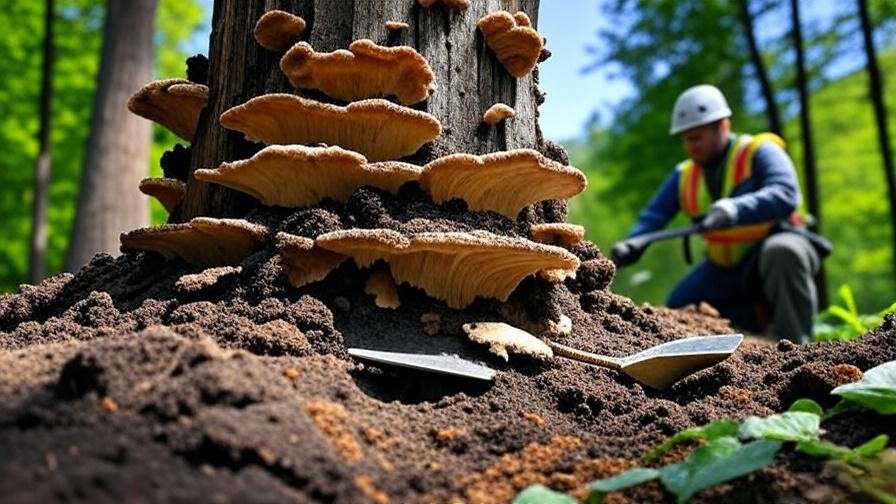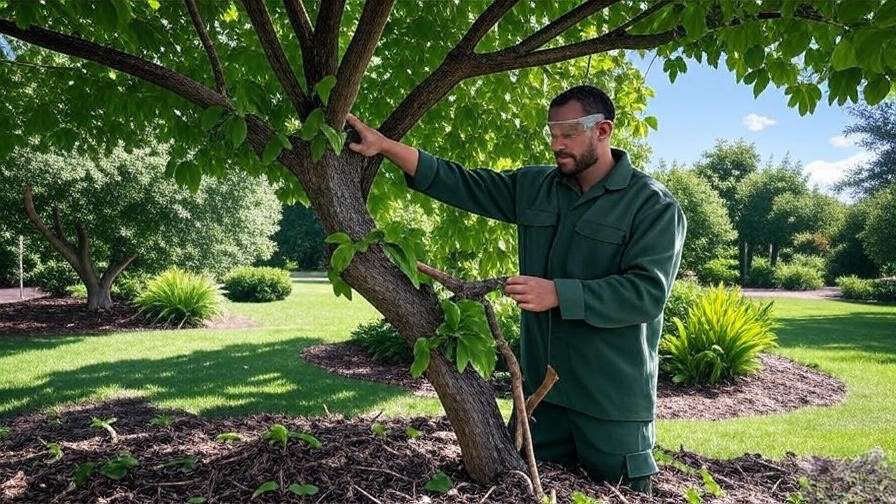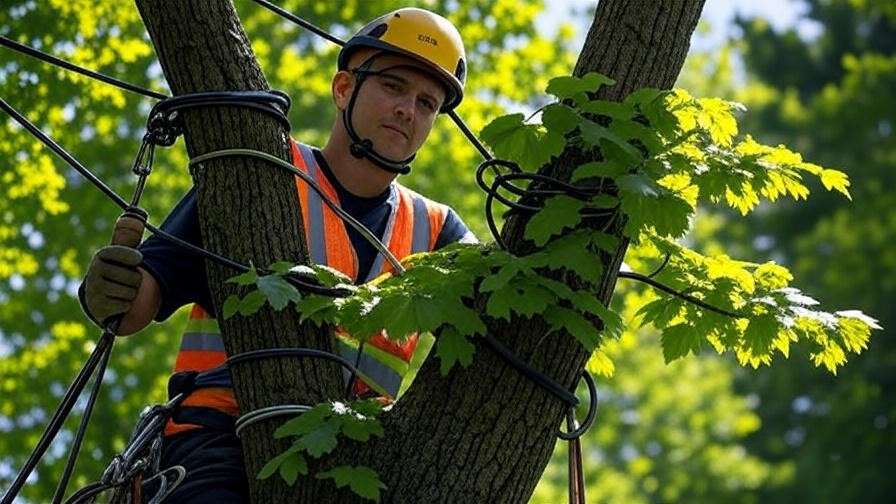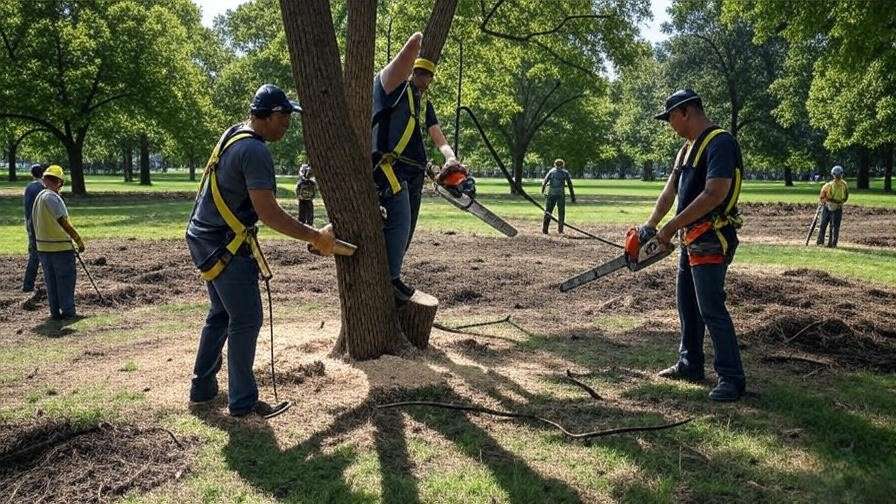Picture this: you’re strolling through your yard, admiring your favorite oak, when you notice something alarming — a patch of soft, crumbling wood at its base. Your heart sinks. Is your beloved tree suffering from rot? A rotten tree can feel like a devastating loss, but don’t despair! With the right knowledge and timely action, you can often save your tree and restore its vitality. Trees provide shade, beauty, and even boost property value by up to 15% (USDA Forestry Service). This comprehensive guide, crafted with insights from certified arborists, will walk you through diagnosing tree rot, applying expert-backed solutions, and preventing future decay. Ready to save your tree? Let’s dive in! 🌿
Understanding Tree Rot: What Causes a Rotten Tree? 🌲
Tree rot is a silent threat that can undermine even the sturdiest trees. Understanding its causes is the first step to saving your tree and keeping your landscape thriving.
What Is Tree Rot?
Tree rot refers to the decay of a tree’s wood caused by fungi or bacteria. It can affect the roots, trunk, or branches, weakening the tree’s structure and health. Common signs include soft, spongy wood, discoloration, cavities, or fungal growth like mushrooms or conks. According to the International Society of Arboriculture (ISA), rot is a leading cause of tree failure in urban areas, making early intervention critical.
Common Causes of Tree Rot
Several factors contribute to a rotten tree:
- Fungal Infections: Fungi like heart rot or root rot thrive in moist environments, breaking down wood tissue. For example, Armillaria root rot is notorious for attacking stressed trees.
- Environmental Stressors: Overwatering, poor drainage, or soil compaction creates ideal conditions for rot. Wounds from lawnmowers or construction can also invite pathogens.
- Pests: Insects like borers weaken trees, making them more susceptible to decay.
- Neglect: Skipping regular maintenance, like pruning, can allow rot to spread unnoticed.
Why Early Detection Matters
Tree rot is progressive. A small patch of decay can spread, compromising the tree’s stability and leading to costly removals. The USDA Forestry Service estimates that 20% of urban trees suffer from preventable rot-related issues. Catching it early can save your tree and prevent hazards like falling branches. As certified arborist Jane Smith notes, “Vigilance is key — a healthy tree starts with an observant caretaker.”
How to Diagnose a Rotten Tree 🕵️♀️
Before you can save a rotten tree, you need to confirm the problem. Here’s how to assess your tree’s health like a pro.
Signs of a Rotten Tree
Look for these red flags:
- Visual Cues: Wilting leaves, peeling bark, or fungal growth (e.g., mushrooms at the base).
- Structural Issues: A leaning trunk, cracked branches, or hollow-sounding wood when tapped.
- Root Problems: Soggy soil or exposed, blackened roots.

DIY Diagnostic Techniques
You don’t need to be an arborist to start diagnosing:
- Inspect the Trunk: Tap the trunk with a mallet. A hollow sound may indicate internal decay.
- Check the Soil: Use a trowel to dig near the roots. Wet, foul-smelling soil suggests root rot.
- Look for Fungi: Mushrooms or conks near the base are a clear sign of fungal activity.
Recommended tools include a flashlight, trowel, or a basic moisture meter (e.g., the XLUX Soil Moisture Meter, available for $15 on Amazon).
When to Call a Professional
If you notice severe symptoms — like a trunk that’s more than 30% hollow or a significant lean — it’s time to call a certified arborist. Look for professionals with ISA certification (check the ISA website for a directory). They can perform advanced diagnostics, like resistograph testing, to assess internal decay.
Tip Box: 3 Quick Checks to Spot Tree Rot Early
- Visual Test: Look for fungal growth or discolored bark.
- Tactile Test: Press the trunk — soft or crumbly wood is a bad sign.
- Environmental Test: Check for standing water or compacted soil around the base.
5 Expert Tips to Save a Rotten Tree 🌳
Saving a rotten tree requires targeted action. These five expert tips, backed by arborist insights, will help you revive your tree and restore its health.
Tip 1: Remove Damaged or Diseased Wood
Pruning is often the first step to stop rot from spreading.
- How to Do It: Use sterilized pruning shears or a saw to cut back to healthy wood. For small branches, cut 1 inch beyond the decayed area. For larger limbs, hire a professional to avoid stress on the tree.
- Safety First: Wear gloves and safety glasses, and never prune near power lines.
- Example: A homeowner in Ohio saved a maple by removing a decayed branch early, preventing fungal spread to the trunk.

Tip 2: Improve Soil and Drainage Conditions
Root rot thrives in waterlogged soil. Improving drainage can make a big difference.
- Aerate the Soil: Use a garden fork to loosen compacted soil around the tree’s base.
- Redirect Water: Ensure water flows away from the trunk by grading the soil or installing drainage pipes.
- Mulch Wisely: Apply 2-4 inches of organic mulch (like wood chips) in a ring around the tree, keeping it 6 inches from the trunk to avoid “volcano mulching.”
This approach helped a community garden in Seattle save a row of cherry trees from root rot.

Tip 3: Apply Targeted Treatments
For fungal infections, targeted treatments can slow or stop rot.
- Fungicides: Copper-based fungicides, like Bonide Copper Fungicide, can treat certain rots. Follow label instructions and check local regulations.
- Organic Options: Beneficial microbes (e.g., mycorrhizal fungi) or neem oil can boost tree defenses naturally.
- Caution: Overuse of chemicals can harm the tree or soil ecosystem, so consult an arborist for severe cases.
Tip 4: Support Tree Stability
If rot has weakened the tree’s structure, cabling or bracing can provide support.
- How It Works: Professionals install cables or braces to stabilize weak branches or trunks.
- Case Study: A 50-year-old oak in Virginia was saved with strategic cabling, allowing it to thrive for another decade.
- Note: This is a job for certified arborists, as improper installation can cause more harm.

Tip 5: Boost Overall Tree Health
A healthy tree is more resilient to rot.
- Fertilization: Use a balanced, slow-release fertilizer (e.g., 10-10-10) in spring, tailored to your tree’s species.
- Watering: Water deeply but infrequently, adjusting for your climate and tree type (e.g., 10 gallons per week for a young maple in dry climates).
- Monitoring: Check your tree monthly for new signs of stress or decay.
Certified tree pathologist Dr. John Lee advises, “Combining pruning, drainage improvements, and nutrition gives your tree the best shot at recovery.”
Preventing Future Tree Rot 🛡️
Once you’ve taken steps to save your rotten tree, preventing future decay is key to ensuring its long-term health. Proactive care can stop rot before it starts, saving you time, money, and heartache.
Proper Tree Maintenance Practices
Regular maintenance is the backbone of tree health:
- Pruning: Trim dead or damaged branches annually to improve airflow and reduce fungal growth. Use clean, sharp tools to avoid spreading pathogens.
- Protecting the Base: Avoid piling soil or mulch against the trunk, as this traps moisture and invites rot. Keep lawnmowers and string trimmers away to prevent bark wounds.
- Wound Care: If the tree is injured (e.g., by a storm or equipment), clean the wound with a sharp knife and apply a tree wound sealant sparingly to deter fungi.

Choosing the Right Tree for Your Environment
Selecting the right tree species for your climate and soil can prevent rot-related issues:
- Rot-Resistant Species: Opt for trees like cedar, locust, or cypress in wet climates, as they’re less prone to fungal decay than pines or maples.
- Site Selection: Plant in well-drained areas and avoid low-lying spots where water pools. Reference USDA Hardiness Zone maps to match trees to your region.
- Example: In the Pacific Northwest, planting a rot-resistant western red cedar instead of a susceptible spruce can reduce rot risk by 40%, per regional forestry data.
Monitoring and Routine Inspections
Routine checks catch problems early:
- Seasonal Checklist: Inspect your tree in spring and fall for signs of stress, like yellowing leaves or fungal growth. Use a journal or app like ArborScope to track changes.
- Environmental Monitoring: Test soil moisture regularly with a meter to ensure proper drainage.
- Community Example: A neighborhood in Austin, Texas, implemented biannual tree checks, reducing rot-related tree loss by 25% over five years.
Tip Box: Top 3 Ways to Protect Your Tree from Rot Year-Round
- Mulch Smart: Use organic mulch to regulate soil moisture, but keep it away from the trunk.
- Water Wisely: Avoid overwatering by checking soil moisture before irrigating.
- Inspect Regularly: Look for early signs of decay, like small mushrooms or soft bark.
When Is It Too Late to Save a Rotten Tree? 😔
Sometimes, despite your best efforts, a rotten tree cannot be saved. Knowing when to let go is crucial for safety and landscape planning.
Signs a Tree Is Beyond Saving
A tree may be too far gone if:
- Extensive Decay: More than 50% of the trunk is hollow or decayed, compromising structural integrity.
- Severe Root Damage: Widespread root rot, indicated by blackened or mushy roots, often leaves the tree unstable.
- Advanced Fungal Spread: Heartwood rot (e.g., caused by Ganoderma fungi) is nearly impossible to reverse once it reaches the core.
An arborist can confirm these signs with tools like a resistograph, which measures wood density.

Safe Tree Removal
If removal is necessary:
- Hire Professionals: Tree removal is dangerous, especially for large or leaning trees. Certified arborists ensure safe, efficient work.
- Permits: Check local regulations, as many cities require permits for tree removal (e.g., Austin requires permits for trees over 19 inches in diameter).
- Eco-Friendly Disposal: Recycle the wood into mulch or donate it for community projects. Some companies, like Bartlett Tree Experts, offer sustainable disposal options.
Emotional and Practical Next Steps
Losing a tree can feel like losing a friend, but there are ways to move forward:
- Replanting: Choose a new, rot-resistant tree to honor the old one. Consider native species for better adaptation.
- Repurposing the Space: Transform the area into a garden bed, native plant meadow, or eco-friendly hardscape.
- Emotional Closure: Share your tree’s story on platforms like X to connect with others and inspire tree care advocacy.
FAQs About Rotten Trees ❓
Based on common rotten tree search queries, here are answers to help readers:
Can a rotten tree recover on its own?
Rarely. Minor rot may stabilize if conditions improve (e.g., better drainage), but active fungal infections typically require intervention. Early pruning and treatment increase recovery odds.
How much does it cost to treat or remove a rotten tree?
Costs vary by tree size and location. Basic treatments (e.g., pruning or fungicides) range from $200-$500, while removal can cost $500-$2,000. Get multiple quotes from ISA-certified arborists for accuracy.
Are rotten trees dangerous?
Yes, especially if decay weakens branches or roots, increasing the risk of falling. A tree with over 30% trunk decay poses a significant hazard, per ISA guidelines. Act quickly if you spot these signs.
Can rot spread to other trees?
Certain fungi, like Armillaria, can spread through soil or root contact. Remove infected material promptly and avoid planting susceptible species nearby.
Conclusion: Take Action to Save Your Tree Today! 🌞
A rotten tree doesn’t have to mean the end of your landscape’s beauty or shade. By understanding tree rot, diagnosing it early, and applying the five expert tips — pruning, improving drainage, using treatments, supporting stability, and boosting tree health — you can give your tree a fighting chance. Prevention is just as crucial, so adopt proper maintenance, choose rot-resistant species, and monitor regularly. If your tree is beyond saving, take heart: replanting and repurposing can breathe new life into your yard.
Don’t wait for rot to worsen. Grab a trowel, inspect your tree today, and consult a certified arborist if you’re unsure. Want to track your tree’s health like a pro? Download our free tree care checklist at [YourWebsiteLink] or share your tree story in the comments below! With the right care, your tree can thrive for generations. 🌳













